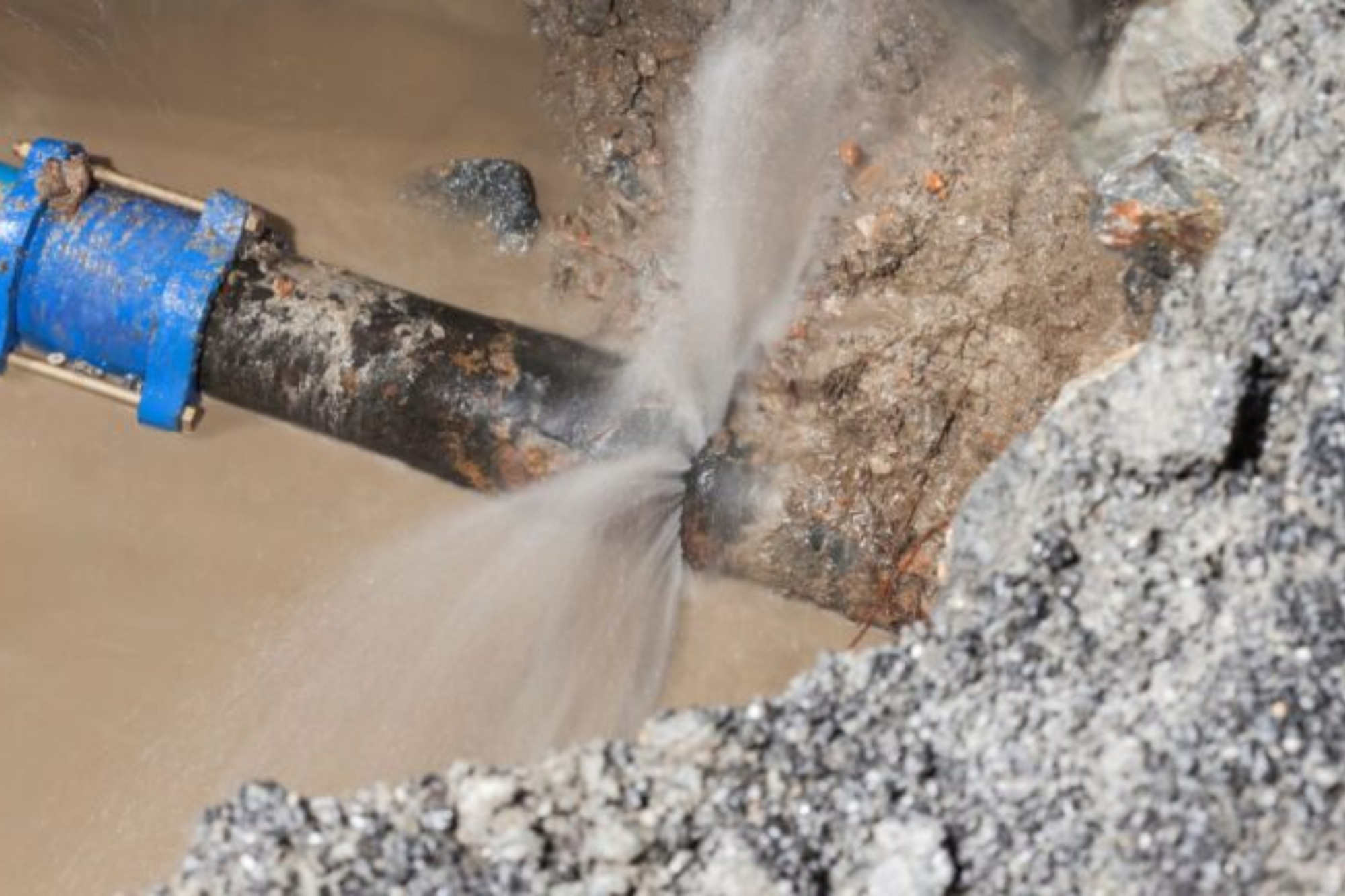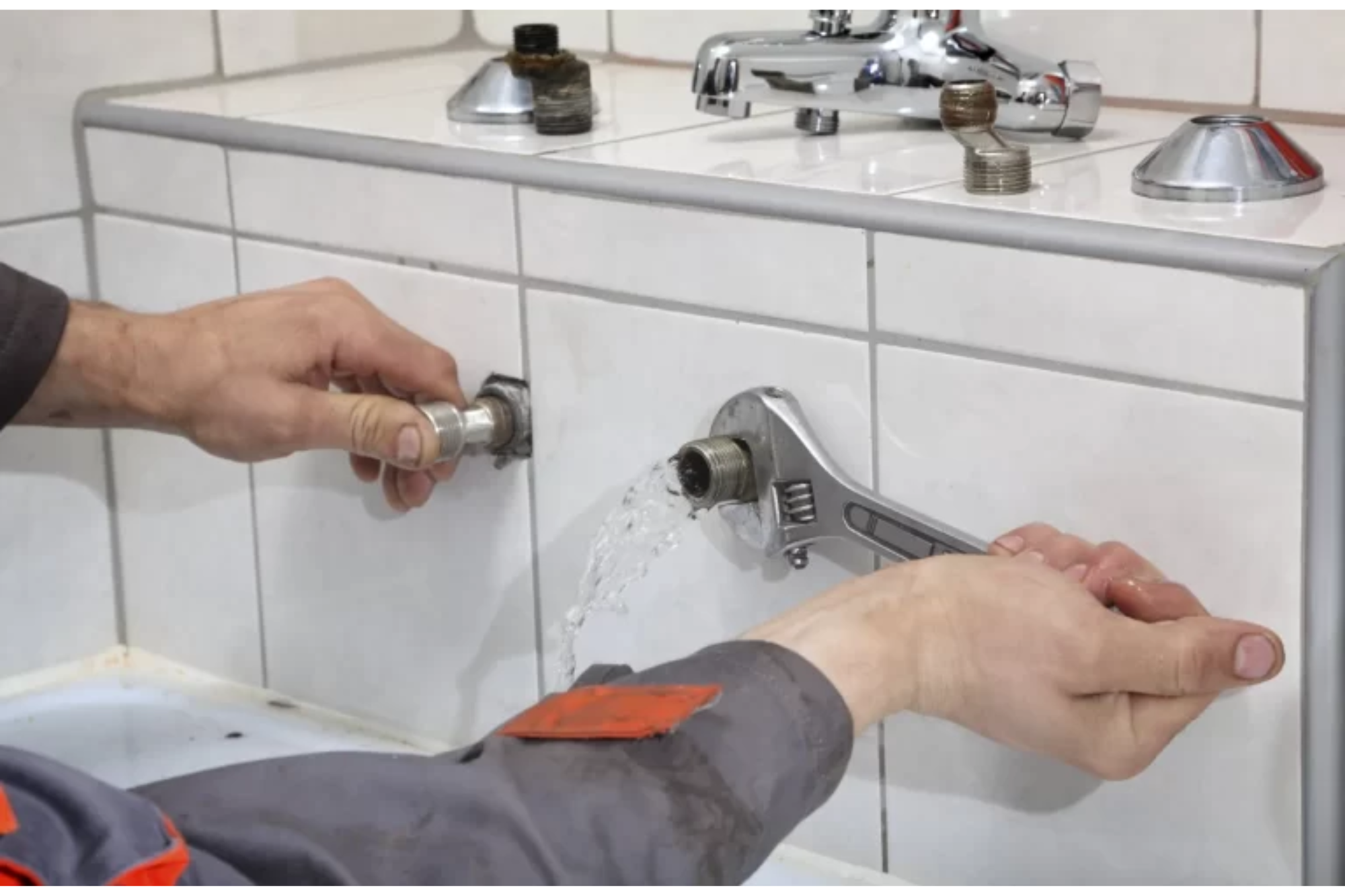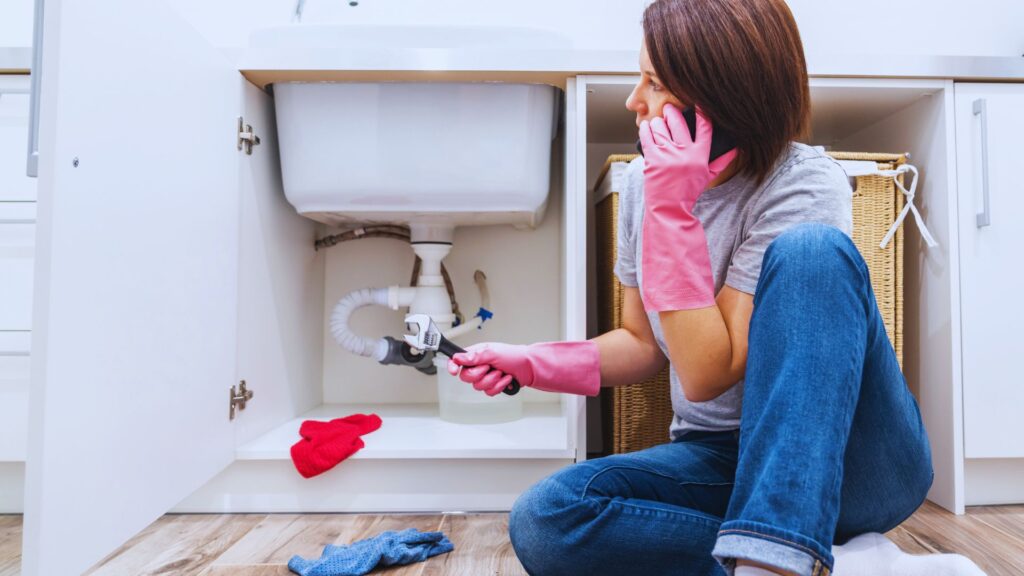
Calculating the expenses involved in fixing a main water line leak can be a challenging task for homeowners. You might be surprised by the range of costs associated with this essential repair. From the initial assessment to the actual repair work, every step can impact your budget differently. Understanding these intricacies can help you make informed decisions and navigate the process with confidence. Let’s explore the various factors that contribute to the overall cost of main water line leak repairs and how you can effectively manage these expenses to safeguard your home’s plumbing system.
Key Takeaways
- Factors influencing repair costs include chosen method, material quality, labor expenses, accessibility, and local market rates.
- Repair methods vary from trenchless technology to traditional excavation, each with unique advantages and costs.
- Material quality and skilled labor impact repair longevity and costs.
- Understanding cost breakdown is vital, considering materials, labor, permits, and additional expenses.
- Insurance coverage for water line leaks may vary, with exclusions and limits to be aware of.
Common Causes of Water Line Leaks
Water line leaks can be caused by various factors, ranging from natural wear and tear to external factors such as ground shifting or tree root intrusion. To prevent these issues, regular plumbing maintenance is essential. Keeping an eye on your water lines and conducting routine check-ups can help detect potential leaks early on.
Utilizing leak detection technologies can also aid in identifying leaks promptly, saving you from costly repairs in the long run.
When it comes to plumbing maintenance tips, one key aspect is to monitor your water bill for any unexpected spikes, as this could indicate a hidden leak. Additionally, paying attention to changes in water pressure or the presence of mold or mildew can signal a potential water line issue.
Insulating your pipes during colder months can prevent freezing and potential bursting, which can lead to leaks.
Moreover, being mindful of what goes down your drains can also contribute to preventing water line leaks. Avoid flushing items that can clog your pipes and cause pressure build-up.
Signs of a Main Water Line Leak
To detect a main water line leak, it’s essential to be observant of specific indicators that can signify a potential issue within your plumbing system.
Leak detection is vital for preserving water and preventing costly damage. One common sign of a main water line leak is a sudden increase in your water bill without a corresponding increase in usage. If you notice unexplained spikes in your water costs, it could indicate a hidden leak in your main water line.
Another sign to watch for is a drop in water pressure throughout your home. If you experience weak water flow from your faucets or showerheads, it might be due to a main water line leak affecting the overall water pressure in your plumbing system.
Additionally, soggy or unusually lush patches in your yard, even during dry weather, can point to a leak underground.
Keep an eye out for the sound of running water when no fixtures are in use. If you hear water running or dripping when all taps are turned off, it could be a sign of a main water line leak.
Being proactive in leak detection not only conserves water but also helps avoid extensive damage and high repair costs associated with untreated leaks.
Factors Influencing Repair Costs
When it comes to the cost of a main water line leak repair, factors such as the chosen repair method and the required material and labor play a significant role.
The repair method options available, whether trenchless techniques or traditional excavation are involved, can impact the overall cost of the repair.
Additionally, the materials needed for the repair and the labor costs associated with the complexity of the job will also influence the total repair expenses.
Repair Method Options
Considering various factors influencing repair costs for a main water line leak, the choice of repair method is a crucial decision to make.
When it comes to a main water line leak repair, two popular options are trenchless technology and pipe relining.
Trenchless technology involves making repairs without the need for extensive digging. This method is less invasive, preserving your landscape and reducing the overall repair time. By using specialized equipment, technicians can access the damaged pipe underground without the disruption of traditional excavation.
On the other hand, pipe relining is a technique where a new lining is inserted into the existing pipe. This method is cost-effective and minimizes the need for extensive pipe replacement. It can help strengthen the damaged pipe, prevent future leaks, and increase the overall lifespan of your water line.
Both trenchless technology and pipe relining offer efficient solutions for repairing main water line leaks, each with its unique advantages.
When choosing a repair method, consider factors such as the extent of damage, budget constraints, and long-term durability to make an informed decision.
Material and Labor
Costs for a main water line leak repair are considerably influenced by the materials used and the labor involved in the repair process. The type of repair materials selected can markedly impact the overall cost of fixing a main water line leak. For instance, opting for high-quality pipes or fittings may incur a higher upfront cost but could lead to a more durable and long-lasting solution, potentially reducing future repair expenses.
Labor rates also play a vital role in determining the total cost of repairing a main water line leak. Skilled professionals typically charge higher rates for their expertise, but their experience can guarantee a more efficient repair process and higher-quality workmanship.
Additionally, factors such as the complexity of the job, accessibility of the water line, and the need for specialized equipment can all influence the labor costs associated with fixing a main water line leak.
Therefore, when considering the material and labor aspects of main water line leak repair, it’s important to weigh the upfront costs against the long-term benefits of using quality repair materials and skilled professionals to guarantee a lasting solution.
DIY vs. Professional Repair Options
With the complexity and potential risks involved in repairing a main water line leak, choosing between a DIY approach and hiring a professional can greatly impact the outcome and cost of the repair.
When considering DIY techniques, it’s essential to assess your skill level and comfort with plumbing projects. Repairing a main water line leak requires specialized knowledge and tools. If you have experience in plumbing and feel confident in your abilities, you may be able to tackle the repair yourself.
However, keep in mind that any mistakes made during the DIY process can lead to further damage and increased costs.
On the other hand, opting for professional services guarantees expertise and efficiency. Licensed plumbers have the training and experience to accurately diagnose the issue and implement the most effective solution. They also have access to advanced equipment that can streamline the repair process.
While the upfront cost of hiring a professional may be higher than DIY, it can save you money in the long run by ensuring the job is done correctly the first time.
Ultimately, the decision between DIY and professional repair options depends on your confidence in your abilities and willingness to take on the task. If in doubt, it’s wise to consult with a professional to determine the best course of action for your main water line leak repair.
Cost Breakdown: Materials vs. Labor
When determining the cost breakdown for repairing a main water line leak, it’s fundamental to understand how expenses are divided between materials and labor. The following breakdown sheds light on the distribution of costs:
- Material Types: The cost of materials can vary markedly based on the type of pipes, fittings, and other supplies needed for the repair. Opting for high-quality materials may increase upfront costs but can lead to a more durable and long-lasting solution.
- Labor Rates: Labor rates play an essential role in the overall cost of repairing a main water line leak. Skilled professionals with extensive experience may charge higher rates, but their expertise can guarantee the job is done efficiently and effectively.
- Additional Costs: In addition to materials and labor, there may be additional costs such as permits, equipment rentals, or cleanup services. These costs should be factored into the total budget to avoid any surprises during the repair process.
Understanding the breakdown of costs between materials and labor is crucial for homeowners planning a main water line repair.
Average Repair Costs by Location
Exploring the geographical variance in average repair costs for main water line leaks provides valuable insights for homeowners seeking to budget effectively for such repairs.
Regional cost variations play a significant role in determining the expenses related to fixing a main water line leak. In urban areas, where population density is high and infrastructure is more complex, repair costs tend to be higher compared to rural areas. Urban settings often involve more intricate systems and may require specialized equipment, contributing to increased repair expenses.
On the other hand, in rural areas where the layout is less dense and simpler, repair costs are generally lower due to easier access to the main water line and less complicated repair processes.
When considering average repair costs by location, it’s crucial to take into account the differences between urban and rural environments. While urban areas may have higher repair costs, rural areas offer a more cost-effective option for homeowners facing main water line leaks.
Understanding these regional cost variations can help homeowners make informed decisions when budgeting for main water line leak repairs based on their specific location. By considering urban vs. rural differences in repair costs, homeowners can plan effectively and guarantee they’re financially prepared for any unexpected water line issues.
Insurance Coverage for Water Line Leaks
When it comes to water line leaks, understanding your insurance coverage is essential.
Your policy may provide coverage for sudden and accidental water line leaks, but gradual leaks may not be included.
It’s important to be familiar with the claim process, common exclusions, and coverage limits to guarantee you’re prepared in case of a water line leak.
Insurance Coverage Overview
Understanding the insurance coverage for water line leaks is essential for homeowners facing potential repair costs. When it comes to insurance coverage for water line leaks, there are a few key points to take into account:
- Coverage Limits: Policies often have specific limits on how much they’ll cover for water line leak repairs. Make sure to review your policy to understand these limits and guarantee you’re adequately protected.
- Policy Types: Different types of insurance policies offer varying levels of coverage for water line leaks. Whether you have a basic homeowner’s policy or a more thorough plan, knowing what your policy covers is critical.
- Exclusions: Some insurance policies may have exclusions for certain types of water line leaks, such as those caused by wear and tear. Understanding these exclusions can help you prepare for potential out-of-pocket costs.
Being aware of these aspects of insurance coverage can give you peace of mind and help you navigate the process of dealing with water line leaks more effectively.
Claim Process Explained
To navigate the complexities of insurance coverage for water line leaks effectively, understanding the claim process is vital. When filing a claim for a water line leak repair, meticulous documentation is imperative. Be prepared to provide detailed records of the incident, including photos, repair estimates, and any communication with your insurance company.
The claim timeline is also a significant aspect to take into account. Typically, insurance companies have specific timeframes within which a claim must be filed and processed. Make certain to adhere to these deadlines to avoid any delays in receiving coverage for your water line repair.
During the claim process, keep all relevant claim documentation organized and readily available. This includes any receipts, invoices, and reports related to the repair of your main water line.
In case of any uncertainties or questions about the process, don’t hesitate to reach out to your insurance provider for clarification. By following these steps and staying proactive, you can guarantee a smoother claim process and quicker resolution for your water line leak repair.
Common Exclusions and Limits
Steering through the domain of insurance coverage for water line leaks involves being aware of common exclusions and limits that may impact your claim.
When dealing with water line leak repairs, it’s essential to understand the fine print of your insurance policy to avoid surprises down the line. Here are some key points to take into account:
- Exclusion Clauses: Insurance policies often contain specific exclusion clauses that outline what types of water line leaks may not be covered. Understanding these exclusions can help you manage your expectations and plan accordingly.
- Policy Limits: Every insurance policy comes with certain limits on coverage. These limits can affect how much you can claim for water line leak repairs. Being familiar with your policy’s limits can ensure understanding during the claims process.
- Documentation Requirements: Insurers may have specific documentation requirements when filing a claim for water line leaks. Ensuring you have all the necessary paperwork in order can streamline the claims process and increase your chances of a successful claim.
Preventive Measures to Avoid Leaks
When it comes to preventing water line leaks, a proactive approach is key. To avoid costly repairs and water wastage, incorporating water conservation tips and regular plumbing maintenance into your routine is vital.
Start by checking for any signs of leaks, such as damp spots, mold growth, or unusually high water bills. Inspect your water lines for any visible damage, corrosion, or wear and tear. Additionally, consider installing a whole-house water filtration system to reduce the presence of harmful minerals that can corrode your pipes over time.
Another preventive measure is to monitor your water pressure regularly. High water pressure can put excessive strain on your pipes, leading to leaks. Invest in a pressure gauge to guarantee your water pressure stays within the recommended range of 40-60 psi.
Moreover, avoid using harsh chemical drain cleaners that can deteriorate your pipes. Instead, opt for natural alternatives like baking soda and vinegar to keep your drains clear without damaging your plumbing system.
Regularly inspecting and maintaining your plumbing system won’t only help prevent leaks but also extend the lifespan of your water lines. By incorporating these preventive measures into your home maintenance routine, you can minimize the risk of water line leaks and avoid costly repairs in the future.
Hiring the Right Contractor for Repairs
When hiring a contractor for water line repairs, it’s essential to take into account certain tips and qualities to guarantee the job is done right.
Look for contractors with experience in handling similar projects, as this expertise can make a significant difference in the quality of work.
Additionally, prioritize contractors who are licensed, insured, and have a good reputation for professionalism and reliability.
Contractor Selection Tips
Selecting the right main water line leak repair contractor is essential to guarantee a successful and efficient outcome.
When choosing a contractor for this critical task, consider the following tips:
- Verify Contractor Credentials: Confirm the contractor you hire is licensed, bonded, and insured. This not only protects you but also indicates the contractor’s professionalism and commitment to quality work.
- Check Customer Reviews: Look for customer reviews and testimonials online or ask for references. Hearing about other homeowners’ experiences can give you valuable insights into the contractor’s reputation and work ethic.
- Seek Transparent Communication: Opt for a contractor who communicates clearly and openly about the repair process, costs involved, and any potential challenges.
This transparency fosters trust and a sense of collaboration between you and the contractor.
Qualities to Look for
To guarantee the successful completion of your main water line leak repair, identifying specific qualities in a contractor is essential.
When seeking reliable contractors for your repair needs, consider their ability to provide emergency services promptly. Ascertain, use quality materials, and offer warranty options on their work, giving you peace of mind in case of future issues.
Look for contractors with extensive plumbing experience, as this expertise is vital for solving complex water line problems efficiently. Reading customer reviews can offer valuable insights into the contractor’s reputation and service quality.
Request detailed cost estimates and clarify repair timelines to avoid any surprises during the project. By prioritizing these qualities in a contractor, you can increase the likelihood of a successful and satisfactory main water line leak repair.
Financing Options for Repair Costs
Considering the significant cost associated with repairing a main water line leak, exploring various financing options becomes essential. When faced with unexpected repair expenses, homeowners often seek ways to manage the financial burden.
Here are some financing options to help you cover the costs:
- Repair Loans: Many financial institutions offer specific loans tailored for home repairs, including water line issues. These loans usually have competitive interest rates and flexible repayment terms, making them a viable option for funding your repair project.
- Home Equity Line of Credit (HELOC): If you have substantial equity in your home, a HELOC allows you to borrow against that equity to fund repairs such as fixing a main water line leak. This option provides you with a revolving line of credit that you can use as needed.
- Credit Cards: While not always the most cost-effective option due to higher interest rates, using a credit card for emergency repairs can provide a quick solution. Some credit cards offer promotional 0% APR periods that can help you spread out payments without accruing interest.
Exploring these financing options can help you navigate the financial aspect of repairing a main water line leak without straining your budget excessively.
Remember to compare terms, interest rates, and repayment options to choose the best fit for your situation.
Now that you’re more informed about the costs and considerations for water line leak repair services, it’s essential to act promptly. Prevention plays a crucial role in avoiding expensive repairs later. Look for leak indicators, review your insurance options, and select a qualified contractor for the job. By doing so, you can maintain the integrity of your home’s water system and prevent future issues. Pipe It Up offers expert water line repair services to help you keep your system running smoothly.




